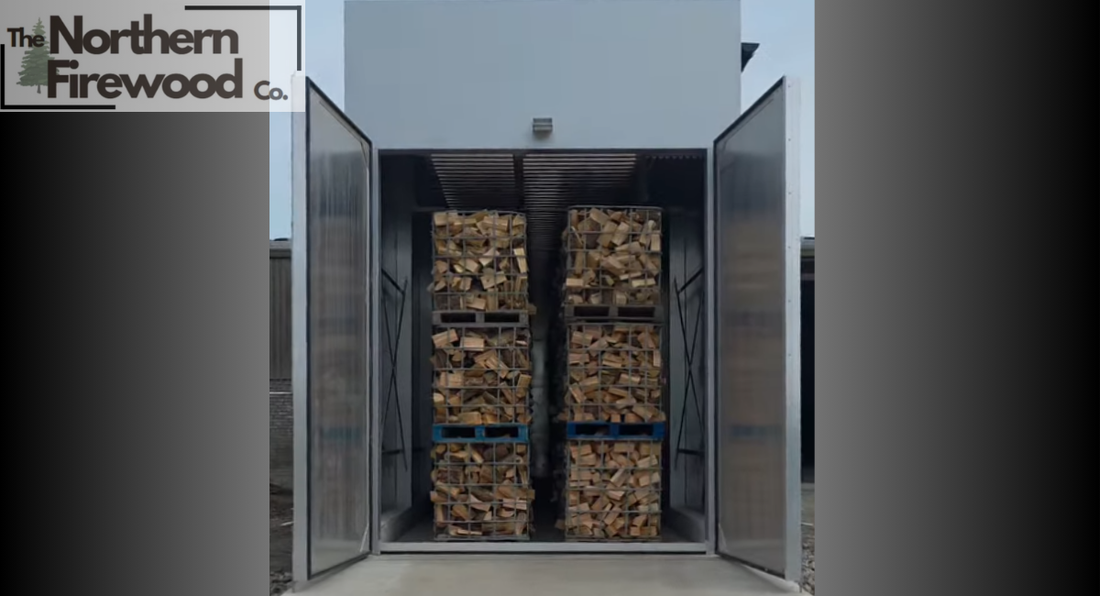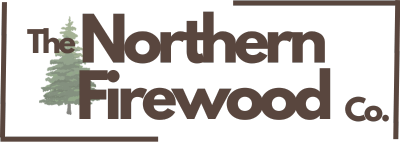
You must never burn wet wood! Except when you have access to our technology 😁
Share
At Northern Firewood, there’s something pretty clever about the way we dry our firewood and it’s all to do with the mighty boiler at the heart of our kiln. Now, this isn’t your run-of-the-mill wood boiler. Ours is called a BET 21, and it lets us do something special: we can heat our kilns using wood waste that most other boilers simply can’t touch. Let me explain about how it all works and why it’s better for the planet.
Making the Most of Waste – The BET 21 Difference
Northern Firewood's Kiln Boiler in action
Imagine running a sawmill, timber yard, or firewood business like ours. At the end of a long working day, there’s always a heap of leftover sawdust, chunky woodchips, even the odd knotty log that’s too awkward to cut for logs. Normally, this waste would rot or get burned off in a pile, not doing much for anyone. But our kiln boiler doesn’t see waste, it sees perfect fuel.
Instead of using only the driest, cleanest woodchip (like conventional biomass boilers require), our BET 21 can handle fuel with much higher moisture content; up to 55%, in fact. We’re talking wet sawdust, mixed green woodchip, bark, tree surgeon waste and other bits and bobs that other systems would reject or clog up on a cold Monday morning.
How Do We Get It Burning?
Here’s the clever bit. The system works a bit like lighting a campfire: you start with good, dry timber to get your embers glowing. We do exactly that, when we fire up the boiler, we start with a load of drier sawdust or clean chip. This gets the whole combustion chamber blazing hot, with a strong ember bed. Once it’s roaring away, we begin adding in the wetter, more awkward stuff.
This initial ‘ember kickstart’ is crucial, because wet fuel needs much more heat to get burning. Lots of boilers simply can’t maintain the right temperatures once wet stuff is added, and they stall or start belching smoke. Not our BET 21 – it’s built to power straight through. The secondary burn chamber reaches temperatures up to 1250°C to clean up gasses and smoke.
The Feeder: A Real Workhorse
Feeding a boiler like this could be a nightmare with a regular auger (think giant screw). Wet chips, sticks, and even small stones can jam most systems. Ours has a heavy-duty scraper system that just shoves whatever’s lying in the bottom of the fuel bin, lumps, sticks, and all, straight into the firebox. It’s brilliantly simple, lets us use just about everything, and keeps waste to an absolute minimum.
Cleaner Than You’d Think
Some folk might imagine a big wood-fired boiler like ours belching great clouds from the flue. Not so! Our system works at seriously high temperatures (around 1250°C), burning almost all the smoke, gases, and even the nasty tars within the chamber before anything leaves the stack. This means the flue gases are incredibly clean. They are tested and certified for low particulates, so they’re not filling the air with fine ash or pollutants.
For us, this isn’t just a box-ticking exercise. Being based right here in Western Scotland surrounded by amazing countryside and tight-knit communities, we want our firewood business to do its bit for the local environment and air quality. Sending less waste to landfill or bonfires, and keeping our emissions clean, is absolutely key to that.
Why Go To All This Trouble?
There are a few reasons, really. First, it's a massive win for sustainability. Using everything from our timber supply chain, rather than tossing it aside, feels and is right. Nothing wasted, nothing burned for no reason. Secondly, it helps to keep our costs down, we are avoiding buying expensive, shipped-in fuels, so we can pass those savings along to you.
And finally—the bit we’re most proud of—the BET 21 means anyone buying our kiln-dried logs knows they’re choosing a product that’s good for their stove, good for their chimney, and better for the Scottish countryside as a whole.
So, next time you get a delivery of our firewood, have a wee think about the journey it’s taken. From scraps and offcuts to warm, dry logs, we like to think every log tells a story—a story that’s a bit more eco-friendly with every load.
